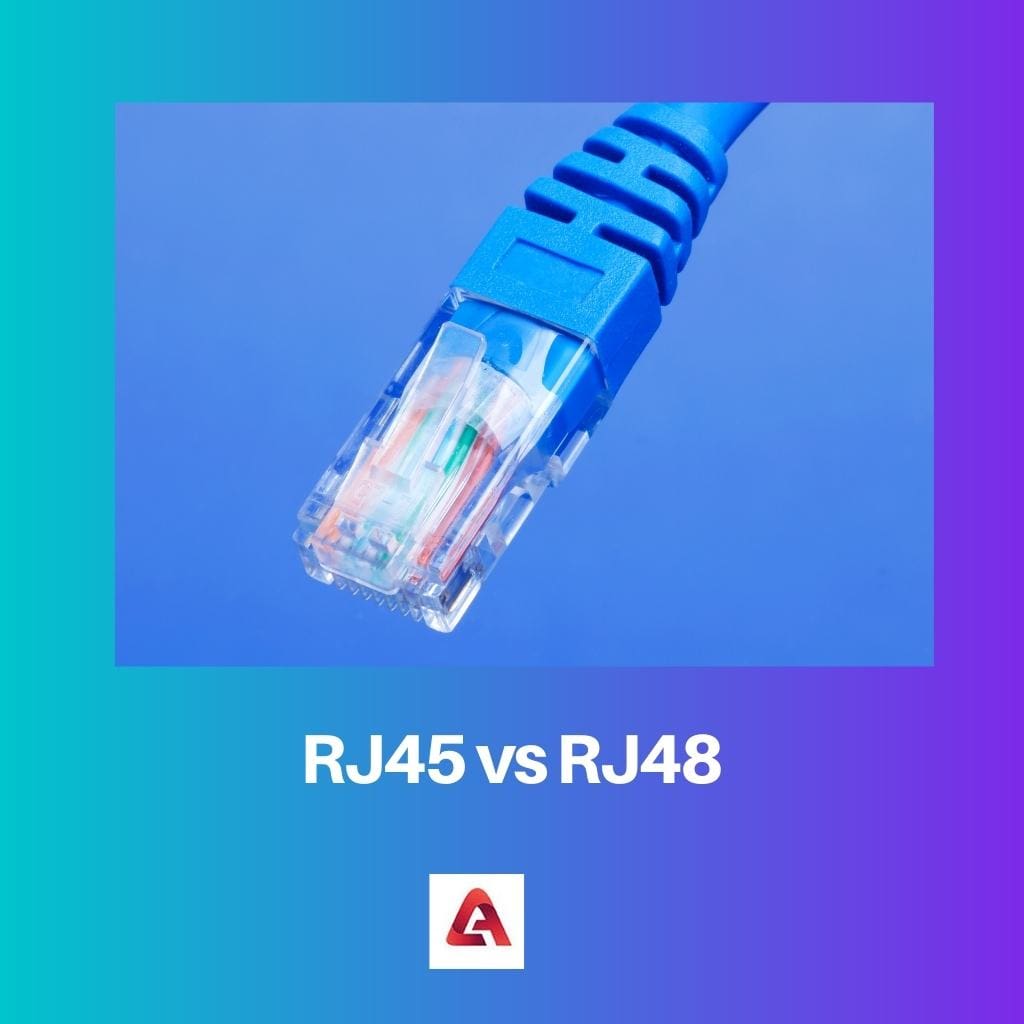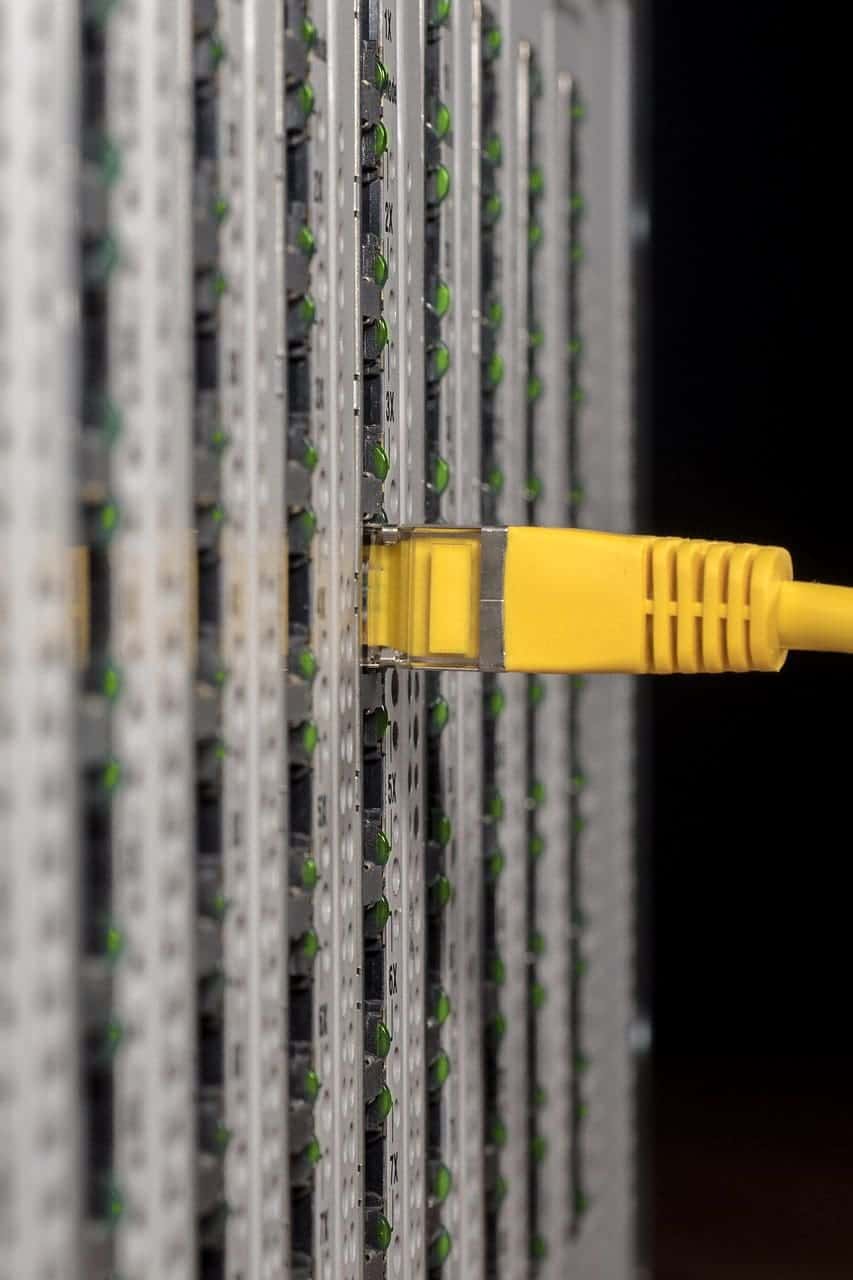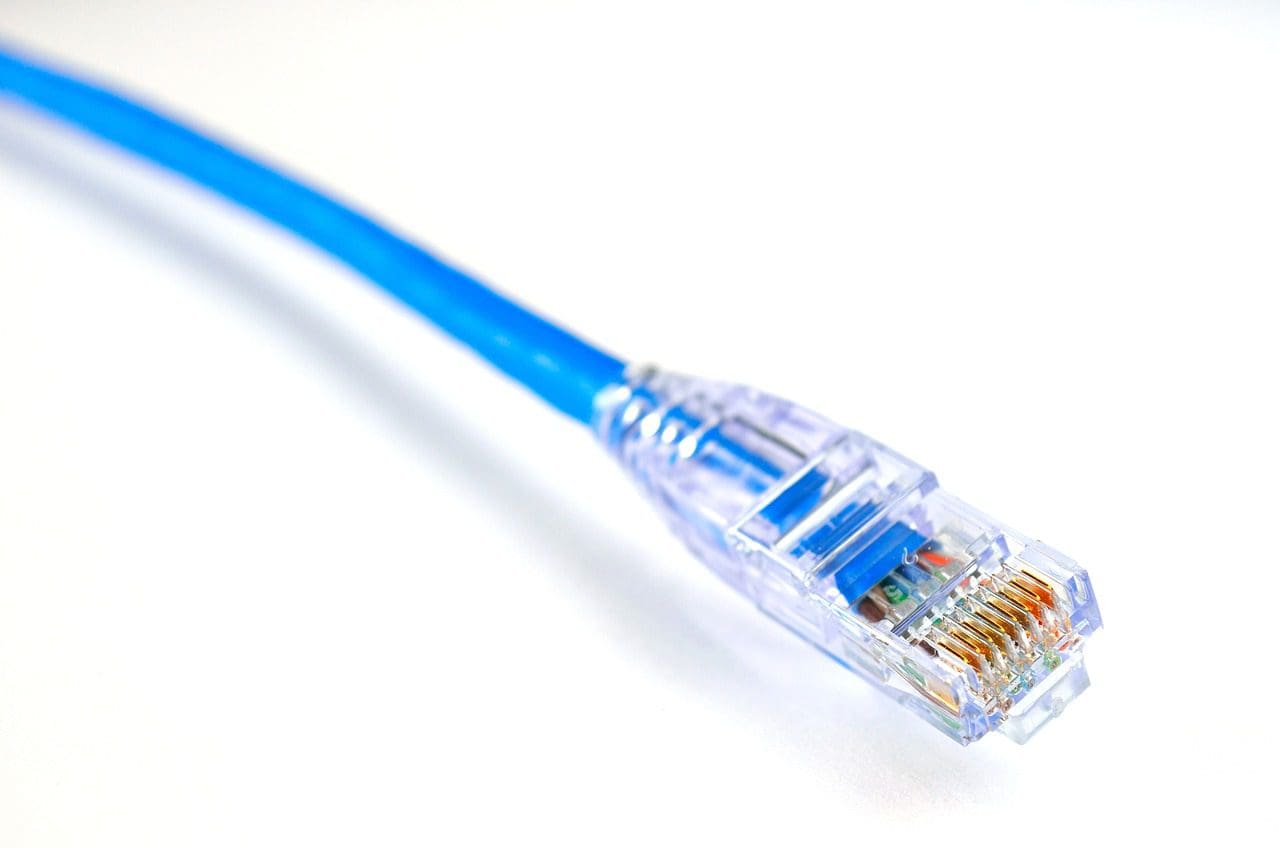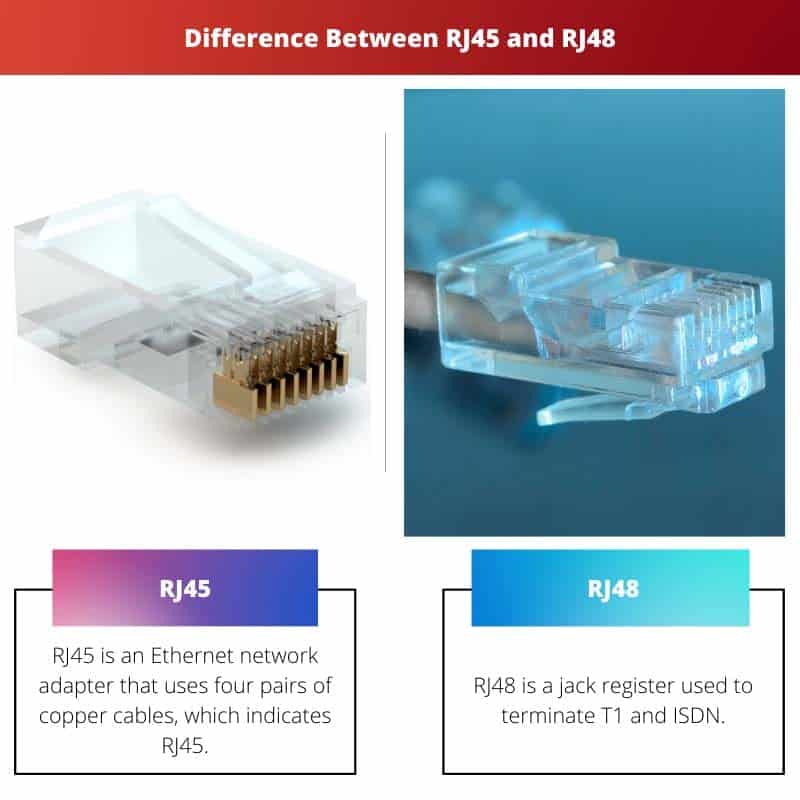Most people can quickly distinguish each cable’s variations and unique usage between an RJ11 and RJ45. But it’s a bit tougher regarding an RJ45 and an RJ48.
The modular connector is mostly the same, and their distinctions cannot be readily identified.
RJ, which stands for registered jack, doesn’t indicate the type of connector used. Instead, the cables used are known. Therefore, these two forms of RJ vary only in the wired manner.
Key Takeaways
- RJ45 and RJ48 are both connectors used in telecommunications and computer networking.
- RJ45 is used for Ethernet connections, while RJ48 is for T1 and E1 lines that transmit voice and data.
- RJ48 connectors have a higher level of shielding than RJ45 connectors, which makes them less susceptible to interference and better suited for longer-distance transmission.
RJ45 vs RJ48
RJ45 or registered jack 45 is large and bulky and used in Ethernet networks that have a configuration of 8P8C. It can support 10 GBPS speed over Ethernet networks. RJ48 has an 8P8C configuration that allows it to handle 8 wires at the same time. It is used for shielded twisted pair cables for signal integrity and T1 lines.

With RJ45, some configurations can be used according to the situation and how. One set uses the 1,2,4 and 5 pins. Other wires are also used for additional protective purposes, while the other wires are reserved for future use. RJ45 is primarily used in networks with relatively short distances between individual network elements. The RJ45, with Cat5e, uses the frequent UTP.
RJ48 cables are used for STP or Shielded Twisted Pair cables to maintain signal integrity. It uses 1,2,7 and 8 Unshielded Twisted Pair in categories 1 to 6. This is typical in many offices and houses and is the primary reason for its popularization. For other uses, RJ48 will be found most in T1 lines of wires spanning longer lengths and revealing themselves to the atmosphere.
Comparison Table
| Parameters of Comparison | RJ45 | RJ48 |
|---|---|---|
| Description | RJ45 is an Ethernet network adapter that uses four pairs of copper cables, which indicates RJ45. | RJ48 is a jack register used to terminate T1 and ISDN. |
| Number of Pins | Pins 1, 2, 3, and 6 are used to receive and transfer. | Used to receive and relay pins 1, 2, 4, 5 or 1, 2, 7, and 8. |
| Cable | UTP cables | STP cables |
| Jack | RJ45 is going to match an RJ48 jack. | RJ48 jack has an additional tab to prevent the RJ48 plug from pushing into an RJ45 jack |
| Twisted pairs | Adjusts distorted pairs without shielding (UTP) | Supports twisted couple protected (STP) |
What is RJ45?
It is possibly the most common kind of connector among Ethernet cable connectors.
The rectangular method is long with a diameter of 11.69 mm—clear acrylic, rigid and long-lasting.
You can see the exact relation between the wires with the search feature. The Rj45 has 8P8C, with eight distinct locations and eight reference points.
This connector is positioned in just one form. The cables are placed in 1, 2, 3, and 6.
It is fitted with eight copper pins. They serve as drivers that relay drives from the router to the wire and vice versa. Gold is used to treat the surface of the pins to avoid rusting.
The aesthetic benefit of the connector is further enhanced. It is suitable for unbroken (UTP) and local area network links.
It has a tweaked Twisted Pair cable between copper wires and the outer PVC jacket without a foil cover. This connector is also suitable for cables that needn’t be too long to connect indoors.

What is RJ48?
This connector form is not as popular as Rj45. But it has very similar features, making it difficult to distinguish them without carefully looking at them.
The Rj45 is also constructed from stiff transparent plastic, allowing the attachment between wires to be visible inside.
Like the Rj45, it has an 8P8C setup, which enables it to handle eight wires simultaneously. Interestingly, this connector has two types of placement. The first is a sequence of 1, 2, 3, and 6.
The second follows a pattern of 1, 2, 7, and 8. The Rj48 is also more robust than the Rj45.
The connector has copper pins which serve as conductors between the cable and the source of the network. They are gold-coated to avoid rusting them.
The Rj48 is an ideal cable connector, ideal for outdoor use with STP (Shielded Twisted Pair). The cables feature an additional cover between the copper wires and the outer PVC jacket.

Main Differences Between RJ45 and RJ48
- The RJ45 uses unbroken tweeted pairs (UTP), whereas shielded twisted pairs are used in the RJ48 (STP). The two types of wires are covered with PVC to prevent electrical damage from data transmission. The STP cables provide the additional foil coating. For longer cables and cables exposed to the weather, STP cabling is needed in which the possibility of data integrity is impaired.
- As you see the two together, you can know that the RJ45 jack is widely used as an Ethernet connector. It was used once but no longer for specific extensive telephone networks. It is now used to bind computers. In contrast, the RJ48 is widely used for T1 lines and other applications requiring long cables which can be environmentally exposed. Due to the inclusion of security provided by the STP cable, RJ48 is best suited to that.
- Rj45 is a Single row line, whereas rj48 is a Multi-line and flush assembly.
- Pins 1,2,3 and 6 are available in RJ45 connectors, whereas several pin groupings of RJ48 connectors are used. Some are 1, 2, 4 or 5, or 1, 2, 7, or 8. Additional data shielding can also be used on other cables.
- There is an ‘8’ position in rj45, whereas there is a ’10’ position in rj48.




